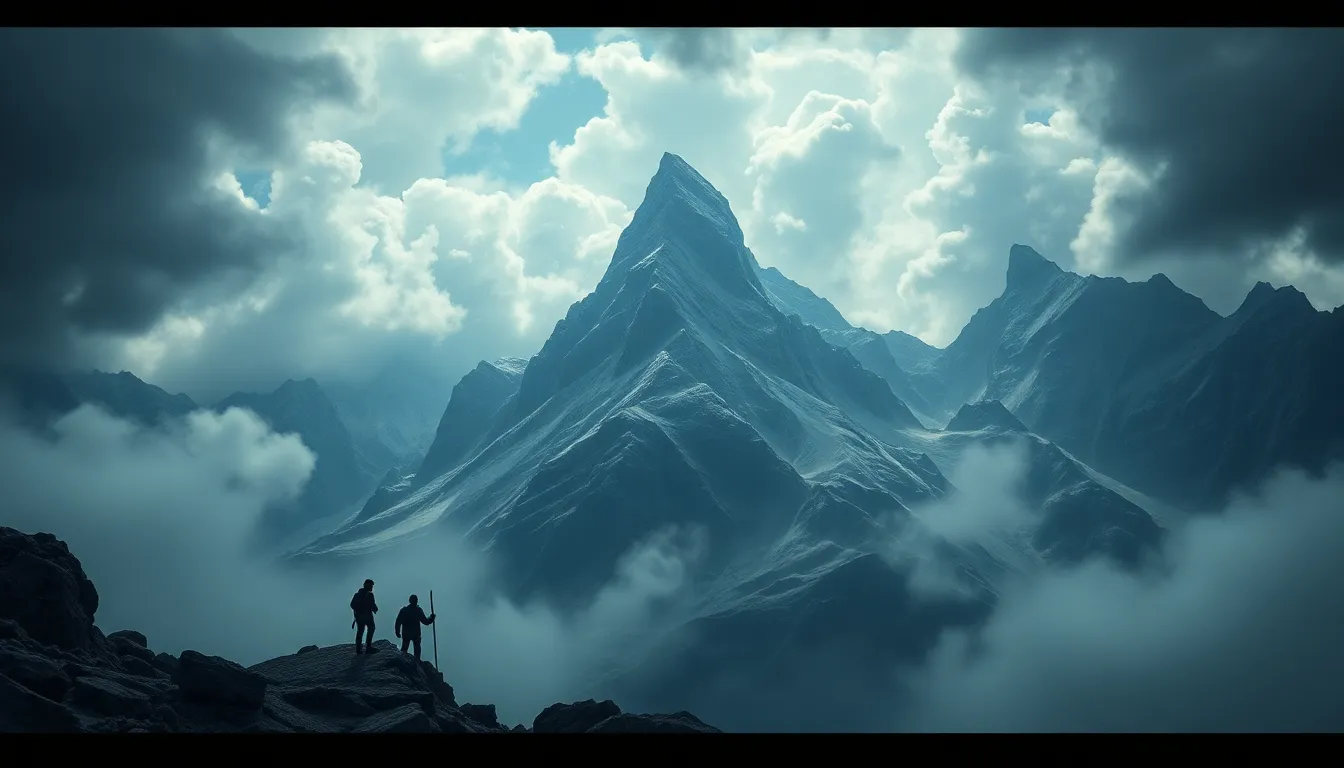The Mountain of the Daring: Tales of Adventurers Who Conquered Heights
Introduction: The Allure of High Places
Mountains have always held a special place in the hearts of adventurers and dreamers alike. The towering peaks, shrouded in clouds, invoke a sense of mystery and challenge that is hard to resist. From the ancient times of early human civilization to the modern age, the allure of high places has inspired countless individuals to embark on daring expeditions. Mountaineering is not merely a sport; it is a testament to the human spirit, showcasing our innate desire to explore and conquer the unknown.
Throughout history, mountains have been symbols of achievement, spirituality, and resilience. They have served as backdrops for stories of triumph and tales of survival, which continue to resonate with adventurers around the globe. The significance of mountaineering extends beyond personal achievement; it reflects humanity’s quest for exploration and understanding of our planet.
The Challenge of the Heights: Understanding Mountain Climbing
Mountain climbing is not for the faint-hearted. It demands physical strength, mental fortitude, and an unwavering will to push through challenges. Climbers face numerous obstacles, including:
- Extreme weather conditions
- High altitudes and oxygen deprivation
- Steep, rugged terrain
- Physical exhaustion from long ascents
Successful expeditions require rigorous preparation and training. Climbers often engage in:
- Physical conditioning to build strength and endurance
- Technical training to master climbing skills
- Research on routes and weather patterns
- Acclimatization to prevent altitude sickness
Without thorough preparation, even the most experienced climbers can find themselves in perilous situations.
Legends of the Peaks: Historical Mountaineers Who Made Their Mark
Throughout the annals of mountaineering history, certain climbers have emerged as legends, pushing the boundaries of what was thought possible. Two of the most notable figures are:
Sir Edmund Hillary
Sir Edmund Hillary, a New Zealand mountaineer, became famous for being one of the first two individuals to reach the summit of Mount Everest in 1953, alongside Tenzing Norgay. His perseverance and dedication to mountaineering opened the doors for future climbers and cemented his place in history.
Reinhold Messner
Reinhold Messner, an Italian climber, is celebrated for his numerous ascents of the world’s highest peaks, often without supplemental oxygen. His groundbreaking climbs and philosophy of climbing have significantly impacted the sport, emphasizing the importance of self-reliance and respecting nature.
The Rise of Women in Mountaineering
Women have historically faced barriers in the male-dominated world of mountaineering, yet many have risen to prominence, achieving remarkable feats. Notable female climbers include:
- Junko Tabei: The first woman to reach the summit of Mount Everest in 1975 and to climb all 14 of the world’s 8,000-meter peaks.
- Pat Morrow: A pioneering climber and photographer, Morrow has contributed significantly to both the sport and the representation of women in climbing.
These women’s stories inspire future generations of female climbers, proving that with determination and courage, barriers can be broken.
Modern-Day Adventurers: Pushing the Limits of Exploration
In the contemporary landscape of mountaineering, climbers continue to push the limits of human capability. Modern adventurers are redefining what is possible, with some notable figures including:
- Alex Honnold: Known for his free solo climbs, including the first ascent of El Capitan in Yosemite National Park without ropes.
- Tommy Caldwell: Recognized for his first free ascent of the Dawn Wall on El Capitan, a feat that took him and his partner months to achieve.
Advancements in gear and technology have also revolutionized the climbing experience. Innovations such as improved climbing shoes, lightweight gear, and advanced weather forecasting tools have enhanced safety and performance, allowing climbers to explore previously unreachable heights.
The Spirit of Adventure: Tales of Survival and Resilience
The mountains are not only a playground for adventurers but also a stage for survival and resilience. Many climbers have faced life-threatening situations, often emerging with incredible stories of survival. Some remarkable accounts include:
- A climber stranded on a peak for days, surviving on minimal resources until rescued.
- A team that had to make a harrowing decision to abandon their summit attempt to save a fellow climber in distress.
What drives individuals to risk their lives in pursuit of adventure? For many, it is the thrill of challenge, the beauty of nature, and the profound sense of accomplishment that comes from overcoming adversity.
The Culture of Climbing: Community and Camaraderie in the Mountains
The climbing community is built on values of support, teamwork, and camaraderie. Climbers often form bonds that last a lifetime, sharing experiences and challenges that only fellow adventurers can understand. Essential aspects of this culture include:
- Mentorship: Experienced climbers often guide novices, sharing knowledge and skills.
- Teamwork: Successful climbs often rely on effective communication and collaboration.
- Environmental stewardship: Many climbers advocate for the protection of mountain environments.
This sense of community makes mountaineering not just about the individual journey but also about shared experiences and mutual support.
Environmental Challenges: The Impact of Climbing on Nature
As the popularity of climbing has grown, so too has concern for the environmental impact of mountaineering. The ecological footprint of climbing can be significant, leading to:
- Soil erosion and damage to fragile ecosystems
- Increased waste and litter in remote areas
- Disturbance to wildlife habitats
In response, many climbers and organizations are promoting sustainable climbing practices, including:
- Leave No Trace principles to minimize impact
- Supporting conservation efforts in climbing areas
- Educating climbers about responsible practices
These initiatives aim to preserve the beauty of the mountains for future generations.
The Future of Mountaineering: Trends and Innovations
Looking ahead, the future of mountaineering is likely to be shaped by continued advancements in technology and changing social dynamics. Some anticipated trends include:
- Greater accessibility to climbing for diverse populations
- Innovations in safety gear that enhance risk management
- Increased emphasis on environmental sustainability and conservation
As technology continues to evolve, so too will the experiences and capabilities of climbers, opening new avenues for exploration and achievement.
Conclusion: The Timeless Appeal of the Mountain
The mountains will always hold a timeless appeal for those who seek adventure and discovery. The stories of climbers, past and present, inspire us to embrace our own journeys, whether they lead us to the highest peaks or challenge us in our daily lives. As we reflect on the courage and determination of those who have conquered the heights, let us remember that the spirit of adventure lives within us all. So, gear up, step outside, and embark on your own adventure, wherever it may take you.



